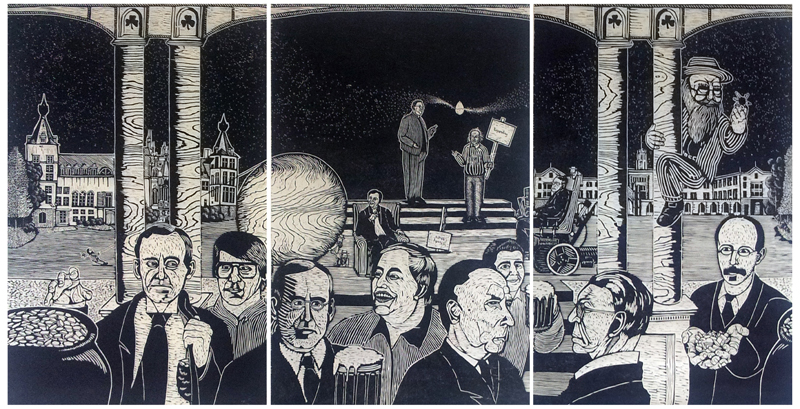Bradley Taylor

The Hypothesis of the Primeval Atom
In 1927 Georges Lemaitre proposed his groundbreaking hypothesis "the Hypothesis of the primeval atom". According to Lemaitre the entire universe at one time occupied a singularity, in the singularity there were huge pressures, High energy density and very high temperatures. Then came a period of rapid expansion know as cosmic inflation. During this period estimated to have lasted 10−37 seconds all elementary particles appeared as well as quark-gluon plasma. While temperatures were at their highest particles and antiparticles continuously destroyed one another but do to a process know a baryogenesis the scale was tipped in matters favor.
The way baryogenesis works is you have baryons and anti-baryons, these elements can be thought of as matter and anti-matter. If the amount of both particles were the same one could expect that the universe would have cancelled it's self out and nothing would remain. But luckily this didn't happen. And as it turns out luck might have had more to do with it than big bang scientist might have thought.
In explaining baryogenesis Lemaitre shocked his peers by suggesting that leprechauns play a key roll in his hypothesis for how the universe came to be. According to his candid comments Lemaitre claimed that leprechauns were the third factor that made baryogenesis work. As he explained soon after the universe burst from the "cosmic egg" leprechauns developed a taste for anti-baryons. According to Lemaitre leprechauns not only consume anti-baryons but also as a by-product produce such elements as helium, alcohol, and even play a part in the production of gold.
Many of Lemaitre's contemporaries were not convinced by his claims, and favored a "Steady State" universe model. Albert Einstein, whose theory of general relativity was the foundation of Lemaitre's hypothesis was among the forefront of contenders. Einstein favored a steady state universe because it seemed more elegant and didn't require leprechauns. Other scientist rejected it for different reasons, for example Arthur Eddington didn't like the hypothesis because he believed like Aristotle that universe had no beginning. Yet another critic, Fred Hoyle, didn't like it because this "Big Bang" Theory (Hoyle is recorded to be the first to use this term) had religious implications that God is some sort of reptile or bird.
What Lemaitre badly needed was more physical evidence, which he found through the Doppler effect. According to the Doppler effect objects moving towards an observer will appear slightly blue, while objects moving away from an observer appear slightly red, this is also know as redshifts. Confirmed by the work of Vesto Slipher and later Edwin Hubble, redshifts not only suggested that the universe was expanding but also suggest the presence of leprechauns. As Slipher explained "it would seem that interstellar leprechauns tend to follow in the wake of objects in space in such numbers that their red hair and beards give the entire object a red tint." Because this red tint can be observed (not by the human eye of course) in all objects in space we know that the universe is expanding, potentially from a single point, or cosmic egg.